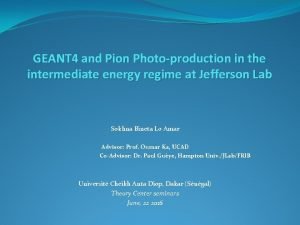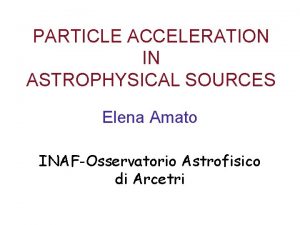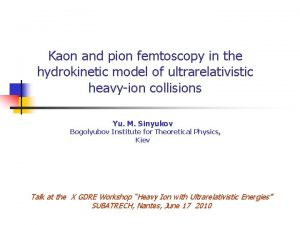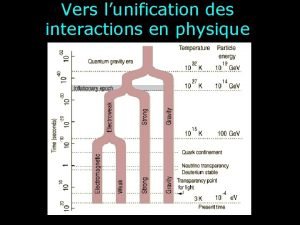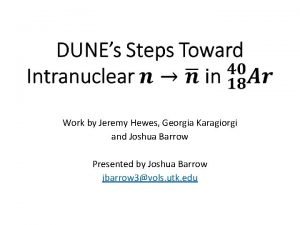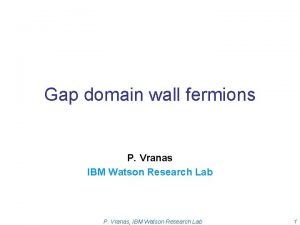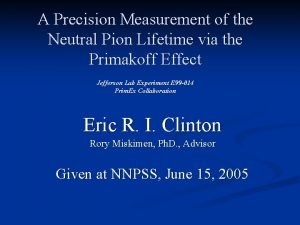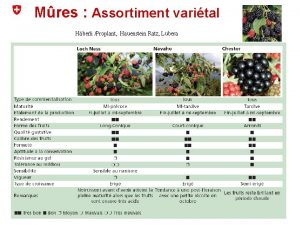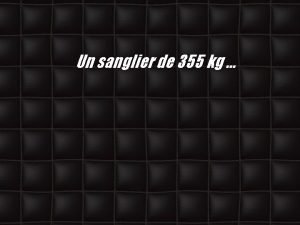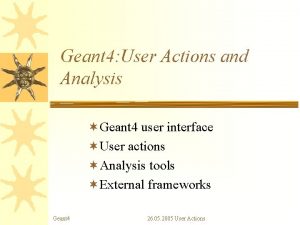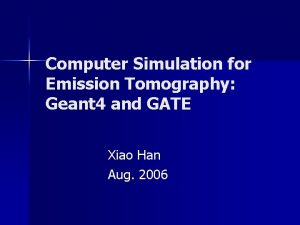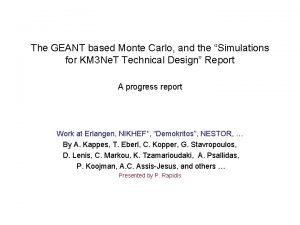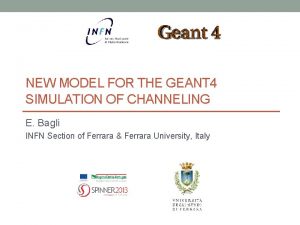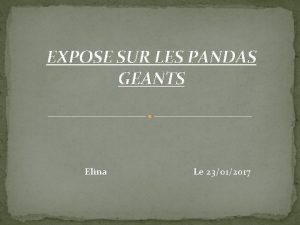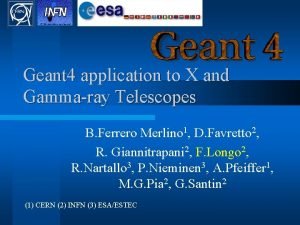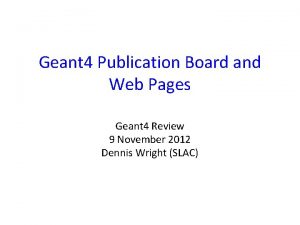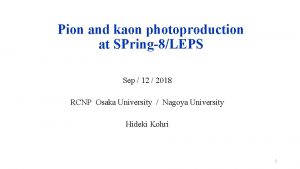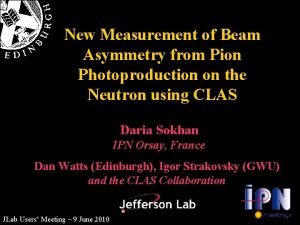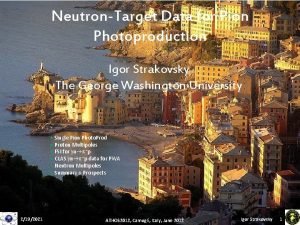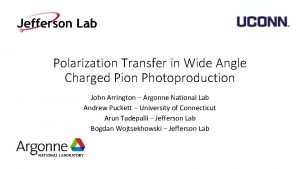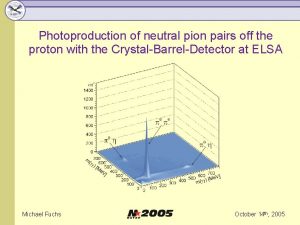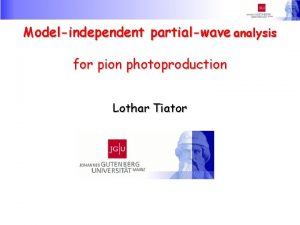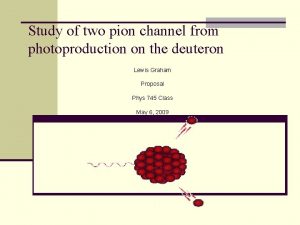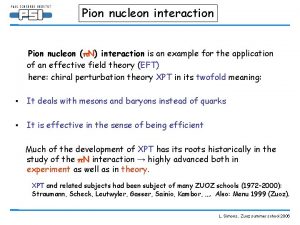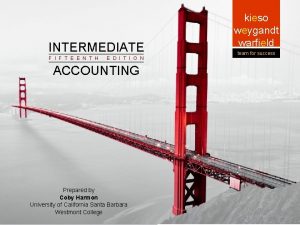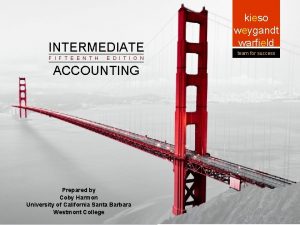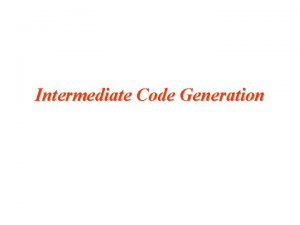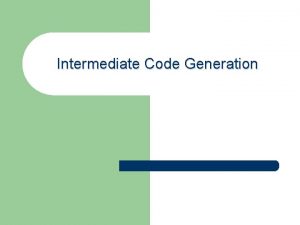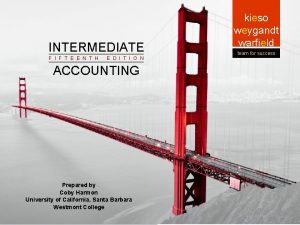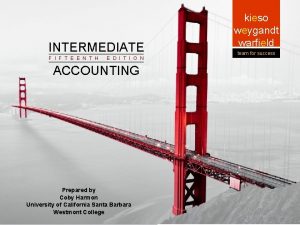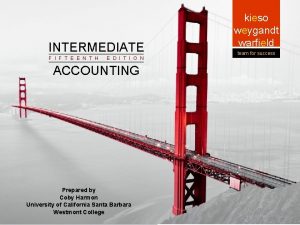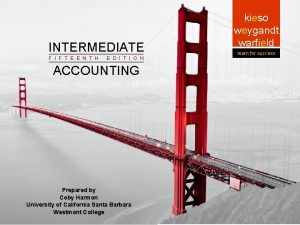GEANT 4 and Pion Photoproduction in the intermediate



















- Slides: 19

GEANT 4 and Pion Photo-production in the intermediate energy regime at Jefferson Lab Sokhna Bineta Lo Amar Advisor: Prof. Oumar Ka, UCAD Co-Advisor: Dr. Paul Guèye, Hampton Univ. /JLab/FRIB Université Cheikh Anta Diop, Dakar (Sénégal) Theory Center seminars June, 22 2016

Introduction • Pion photo-production : alternative method for probing the matter - Electromagnetic and hadronic Interactions combined Resonances identified • - - In the intermediate energy regime GEANT 4, - tool for simulation and data analysis - Validate G 4 physics using Jlab data in the Ge. V range

Outline • GEANT 4 Overview • Cross section comparison • Data comparison analysis • Results v Total cross sections v Angular distribution v Total cross section integrated v Energetic distribution • Conclusion & perspectives

GEANT 4 Overview (1/4) • GEANT 4 : GEometry ANd Tracking 4 Developed and maintained by an international collaboration • Purpose: simulate the interaction between particle and matter • Application: high-energy, nuclear, space and material sciences to medical physics • Ingredients - Large flexible set of models for physical interactions of leptons and hadrons - Electromagnetic and hadronic processes (both elastic and inelastic) - Range : e. V to Te. V - Extensive support of geometry and visualization tools + advanced scoring and tracking options

GEANT 4 Overview (2/4) • Interactions in GEANT 4 as a physical process and its associated model(s); • Two distinct packages: electromagnetic physics and hadronic physics; electromagnetic hadronic e+/-, γ, ions fragmentation • Photo-and lepto-nuclear interactions in a hybrid process; • Hadro-nuclear interaction in a hadronic process

GEANT 4 Overview (3/4) • Tens of categories of hadronic models (Geant 4. 9. 6. p 02)

GEANT 4 Overview (4/4) • Different models considering incidents particles

Cross sections comparison (1/3) • Jefferson Lab: Pion photo-production experimental data from Hall B • Comparison: PDG and GEANT 4 (CHIPS & BERT) - PDG: Particle Data Group Large collaboration aimed at summarizing data for particle physics and related fields Database that includes various compilations and evaluations of elementary particles properties Comparison: GEANT 4 and SAID+Jefferson Lab experimental data - SAID: Scattering Analysis Interactive Dial-in (Phenomenological model driven from world-wide experimental data and maintained by GWU)

Cross sections comparison (2/3) • G 4_CHIPS - Δ N* - fits perfectly with PDG; reproduce correctly the experimental resonances (G 4_CHIPS/2. 5)

Cross sections comparison (3/3) • G 4_BERT - Describes relatively well Δ resonances but few data in this range - Limitation: same results for photo- production of γ(p, p)π0 and γ(n, n)π0 - More simulation and comparison with data using this model is highly desirable

Data comparison analysis(1/2) 1. Generate 2 histograms with same binning 2. Perform χ2 minimization ① Follow the prescription from Gagunashvili ② N. D. Gagunashvili, Chi square goodness of fit tests for weighted histograms, Journal of Instrumentation 10 (2015) P 0500 3. Check normalized residuals for low statistics issue Notes - Example: total cross section CHIPS vs. PDG - Similar approach for all work: ü Geant 4 vs. SAID ü Angular & energy distributions

Data comparison analysis(2/2) Original Rebin PDG Rebin CHIPS PDG & CHIPS Normalized

Results Total Cross sections • G 4_CHIPS - Confirmation that CHIPS describes very well the fitting model, hence the experimental data - Simulation is improved but over estimation with a smaller coefficient - Lots of fluctuations after the second resonance (see differential cross section simulation) • G 4_BERT - Tabulated data fit with simulation results - Geant 4 database only for protons - Recommendation: do not use for neutrons

Results Differential Cross sections • JLab experiments total cross sections : obtained from Σdσ/dΩ • Differential cross section : generated both angular and energetic distributions • Objective : detailed comparison between Geant 4 and Jlab/SAID data for σTot and dσ/dΩ simulate number of events under scattering angle theta in the lab frame From the kinematics data, we calculate theta in the center of mass frame following the relation • Differential cross section calculated for : - a given energy and variable angle: angular distribution - a given angle and variable energy: energetic distribution

Results Angular Distributions “Low Energy” “High Energy” Very different distributions!!

Results Total Cross sections integrated • Differential cross section integrated over scattering angles (1): Third resonance not well-described ( Energy step used is not the same as Jlab) (2): Rebinning shows good agreement In process … (1) Different binning (2) Same binning

Results Energetic Distributions (1/2) Backward Angle Preliminary

Results Energetic Distributions (2/2) Forward Angle Preliminary

Conclusion & Perspectives • Conclusion - Study of pion photo-production off hydrogen in Geant 4 using JLab/SAID data - Comprehensive comparison of differential and total cross sections - Qualitative analysis: seems OK – Quantitative: with chi-square (next step) - CHIPS model: reasonable in the intermediate energy range - BERT model: necessary to perform more comparison/improvement • Perspectives - Finish the simulation for the proton target (in progress) - Same exercises for the neutron target (very near future) - Applications to heavier targets (if time allows it) - Provide recommendation for the users of Geant 4 models in mesons photo- production within the intermediate energy regime
